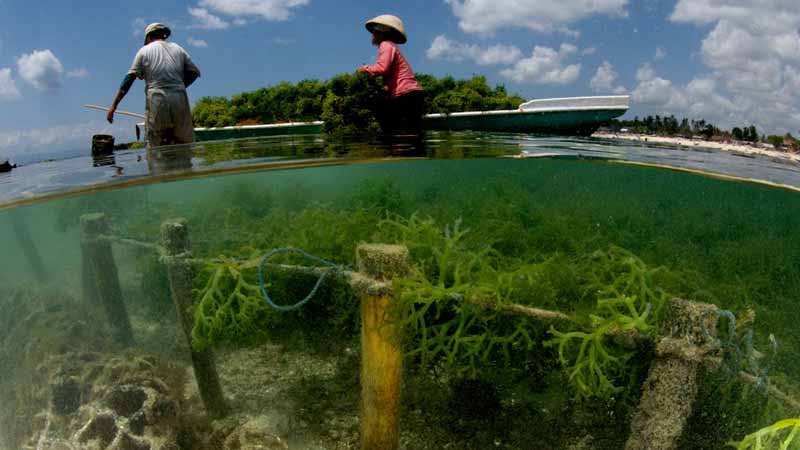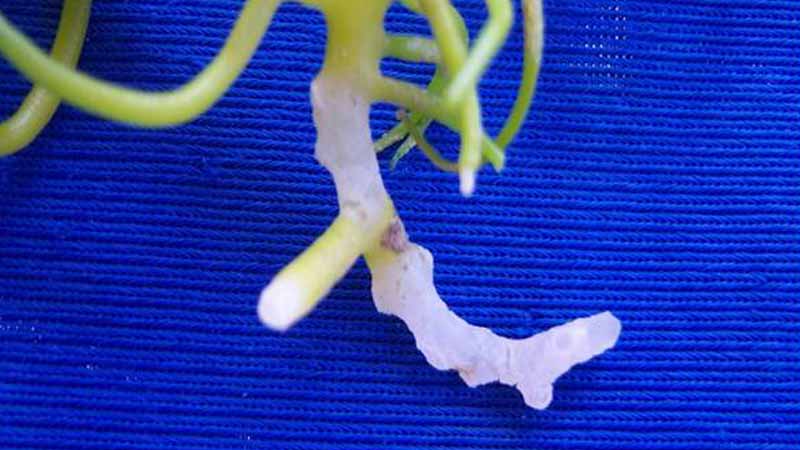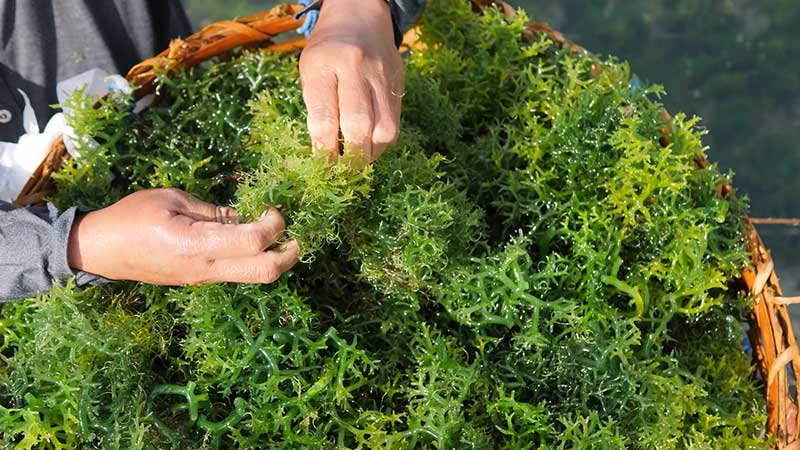Before you buy sea moss it is worth considering a few factors beyond the price. Origin, cultivation techniques, environmental impact, local laws, local ecology, local economics and a few other factors that we consider before buying sea moss. For us, it is more about what we are contributing to with our purchasing power than getting the cheapest price on the market. So, let’s take a closer look at the factors within our decision making process.
When it comes to your health there are often a number of factors that will influence your purchasing decisions. Not all products are created equal, on that we can agree. So in this article I’ll share with you what I needed to know before I made the decision to buy sea moss.
There are a few different places that Irish Sea Moss is cultivated around the world. Some are more favorable than others for a number of reasons. The basic considerations I made before choosing where to buy my sea moss from included:
- The environmental conditions in the area
- The quality of the waters that the sea moss is grown in
- The farming practices applied to cultivate the sea moss
- The practices used to harvest and process the sea moss
- The quality of the sea moss as a finished product
- The prevalence of diseases that affect sea moss in those areas
- The logistics of getting the sea moss to my door, and
- The cost of the sea moss
As I began to look into where I was sourcing my sea moss from, I found that what I learned about the various practices applied in different parts of the industry was troubling.
We know that the oceans have a history of taking a beating from the pollution that has been pumped out from the land. Factories, farms, power plants, rubbish dumps, and commercial operations even on the smaller scale all have an impact. From the blatantly obvious dumping of materials into the ocean, to the storm water drainage systems that feed from transport yards and shopping centers.
Every decision that is consciously or unconsciously made with what you buy plays a part in painting one picture or another. So, it’s more a question of values in where I choose to buy sea moss from than simply the price of the product. If you are not motivated by points such as these, there are some good reasons that link to the quality of the product too.
Sea moss is a very responsive plant. As it spends its life submerged in the water, it is directly impacted by what is in that very water. The last thing you most likely want is a batch of sea moss that has been exposed to nasty chemicals, or worse. So, what can you consider before you buy sea moss that will help you avoid that?
Where does Sea Moss come from?
Sea moss is cultivated in countries around the world. There are very large seaweed farming operations based in Indonesia, the Philippines, the Caribbean, Zanzibar, China, Korea, Japan, Brazil, and Thailand to name a few. As more and more countries wake up to the commercial opportunity presented by this growing industry, the number of farms continues to grow.
With different countries comes different dynamics. Most notably, standards. As an emerging industry, seaweed farming is for the most part unregulated. Many operations tend to be small seaside villages where farmers plant rows of seaweed on submerged string lines.

These types of farms have virtually exploded in some parts of the world, while others are struggling to gain exposure to the global market. With this type of opportunity comes the potential for exploitation. And in an unregulated industry, this is ever more likely.
In recent years the Thai Government has worked towards establishing farming standards for the cultivation and harvesting of sea grapes. The Indonesian Government has supported local Seaweed Farmers with funding contributions.
Sea moss comes in a range of different species, and within those species there can be a range of slightly different characteristics. The most obvious being a difference in color. This can be the result of the waters that the sea moss grows in, the mineral composition of the area, or even the quality and quantity of sunlight.
Although I had the ability to choose from a number of countries before I bought my sea moss, geography and exchange rates were not the only factors that I needed to consider.
I needed to know that with the decision I was making that I was contributing to a sustainable process on multiple levels. As you read on in this article, you will see that as important as the end price of the product is, it really is just one dimension of the decision making process.
Cultivation and Harvesting Considerations
Before you take the plunge and buy sea moss online, consider this. Typically, seaweed companies need to jump through quite a few hoops before they can get their product on the market. Any company that has a current certification to show that they are operating compliantly, and meet the criteria to be deemed as organic are the ones to seek out.
Is Wildcrafting Sea Moss Good or Bad?
As much as there may be a trend towards wildcrafting sea moss, I’m personally against this methodology as it presents a couple of issues in my opinion:
- Wildcrafted sea moss is taken from a balanced environment that really needs it to be where it is as a food source for other localized marine life, and it is a key part of sustaining the immediate habitat, and
- The quality of the seaweed that is collected under the wildcrafting approach may be unfit for human consumption due to a lack of transparency and monitoring of the conditions and environment in which the seaweed is collected from.
There are some who seek to make a point of wildcrafted seaweed possibly being more nutritious than farmed seaweed. As you can already tell, this approach brings about too many issues that conflict with my values. It lacks in fundamental areas and does not support cleaning up the oceans. In fact, it promotes quite the opposite in an opportunistic market. Even though there are businesses which state that they hand-harvest their wild seaweed in a sustainable manner, I’m still not buying it.
What wildcrafting sea moss fails to do is to put more seaweed into the oceans. Increasing the seaweed content in areas where sustainable farming is able to take place provides another food source for marine life in the area. It also increases the health of the water by helping to reduce the Carbon Dioxide (CO2) and acidity (pH) levels in the water.
Think of this as the Ocean’s version of a tree planting program. With more seaweed comes more oxygen, and the water is also alkalized as a result. This is something that our planet needs us to do on a bigger scale than we currently do.play a part in supporting this when you buy sea moss from a reputable supplier.
As a responsible consumer, the more you can get to know about how your seaweed gets to your table, the better off you, the Seaweed Farmers, and the environment can be.
Processing and Packaging
Watch out for unwanted additives and chemicals used in the drying and preservation process. The whole reason you are looking at how you can come up with ways to eat seaweed everyday is to improve your health.
Some companies will bleach their seaweed, particularly in the case of Kappaphycus Alvarezii, another name for sea moss. Naturally dried seaweed should have variations in shade or maybe even color. This is a plant that grows in varying conditions, and like any other plant, it will not look consistently the same as the next plant.
As much as bleaching can take place, so can artificial coloring. If your seaweed is very bright to look at, like a brilliant green, chances are there are artificial colors in it. Naturally, dried seaweed will look a little dull compared to fresh seaweed. But, that’s not what sells, so the manufacturers pump them full of colors to make them look pretty.
But what if it’s coated in chunky looking table salt? You really don’t want to eat that stuff! Typically sea moss is dried in the sun, and the longer it is dried for the lower the moisture content. If you are getting sea moss that has a higher moisture content, it is likely to have a much shorter shelf life, which is why it is later coated in slat. This is a step taken to help preserve the sea moss.
If it has been dried to the point that salt does not need to be added, the shelf life for the sea moss is going to be a lot longer. This is a sign of quality. However, many people think that a bigger piece of sea moss is better, and the ‘real deal’ when it really only has a higher moisture content.
Think of this like you might when you think of dates. You know the Medjool Dates that you can buy which are big and juicy? They tend to cost a lot more when they are dried than when they are fresh. This is due to the reduction in mass, which means less raw dates to the kilo or pound, and there’s the processing (drying) time and handling that needs to be added too.
Dried sea moss, typically to a moisture content below 10% is of a very high grade. It will re-hydrate to be much bigger than what you may first expect. When it is higher in moisture content (or fresher), there needs to more slat to help preserve it. But what about dried seaweed that is seasoned? Too much salt, particularly when it is not a natural occurring mineral salt, is not a good thing. Some seaweed snacks are also pumped full of MSG, and you most likely already know what I’m going to say about that.
While on the topic of processing and packaging, before you buy sea moss you should find out about the nutritional content of the product. If the supplier you are buying from does not have a recent scientific analysis sheet for the product, I would look for one that does. Try to find one that is less than a year old as the shelf life is normally up to two years this should be indicative of the crop being sold.
What type of Sea Moss is the Best?
Without getting into a debate about one species being better than another, we will look at the type of sea moss you buy as an end product. When you buy sea moss it is much better to choose a sea moss that is naturally dried, and not baked.
Take a leaf out of any Raw Foodist’s book with this; if it’s cooked, it’s dead. Roasted seaweed of any kind has much less nutritional value when compared to the fresh or naturally dried varieties you can purchase. Flakes are also something I avoid buying. It’s a personal preference thing; I’d rather have the whole piece of seaweed that I can work with rather than a packet of dusty fragments.
If your sea moss is in a powder form, it may as well be thrown in the bin as far as I’m concerned. It’s no longer a wholefood, and there’s no telling what else has been done to the sea moss in the process. Powdered sea moss is often bulked up with fillers, and at times it is also mixed with Carrageenan.
Diseases and Quality Degradation
Different species of sea moss are prone to different pests, and different diseases. One such disease that can affect sea moss is called ‘Ice-Ice‘. Ice-ice can severely impact upon the yield when farming sea moss.Taking on the appearance of being frozen, ice-ice occurs when the sea moss is exposed to dramatic changes in the surrounding conditions. These can include:
- Fluctuations in salinity
- Shifts in water temperature, and
- Variations in the strength or intensity of sunlight

When species of sea moss such as Kappaphycus Alvarezii are identified as being exposed to Ice-Ice the affected areas are described as taking on a ‘moist’ form which then provides an opportunity for bacteria, specifically Flavobacteria and Aeromonas, to compromise the plant.
Once these have been introduced to the surrounding water, the sea moss takes on an iced white appearance, causing the plant to harden. As a consumer, this renders the plant useless, and is comparable to a woody pineapple, or a powdery stone fruit or apple. There’s little you can do with it, and it’s far from palatable.
The presence of excessive sediment in the water can also play a part in harming the quality of the sea moss. When you are shopping around, before you buy sea moss from a new supplier, see if there is a clear photograph of a new, or current, batch. Look out for high levels of impurities and debris.
A dirty looking specimen will have more than surface debris to contend with. Often, due to the nature of the plant, there can be fragments and sediment inside the plant. This is normal to a lesser extent and can be washed out, however, when you see a soiled plant you’ll know it!
Sediment typically comes from the sea moss being farmed in rapid moving, turbulent water, or after a natural event that causes the seabed to become much more disturbed than it normally is.
Often plants that are heavily soiled by sediment aren’t even harvested for processing. They are far too damaged to have much value in the market, and a good Farmer will not risk their reputation passing off a their rate product.
Quite often, crops in these cases are simply abandoned. This is not a bad thing, as they still fulfill a function to support the ecosystem, even in their lesser grade state. The resources required to clean the sediment off the sea moss often means that even if it were able to be sold, the price required to make a profit would bee too high for the consumer.
While we are on the topic of grades, there are different grades for sea moss, which is why there may be significant price differences. Like any other produce, the higher the grade, or quality, the higher the price.
Given that there are a number of factors to consider before you buy sea moss, this should have provided some context on what to look for, and why. There is a whole other level of discussion that could be entered into on this topic, which is where the comments section below will be of value. If you have any tips or questions we would love to hear from you.
Last Updated on 8 months by D&C Editorial Team


